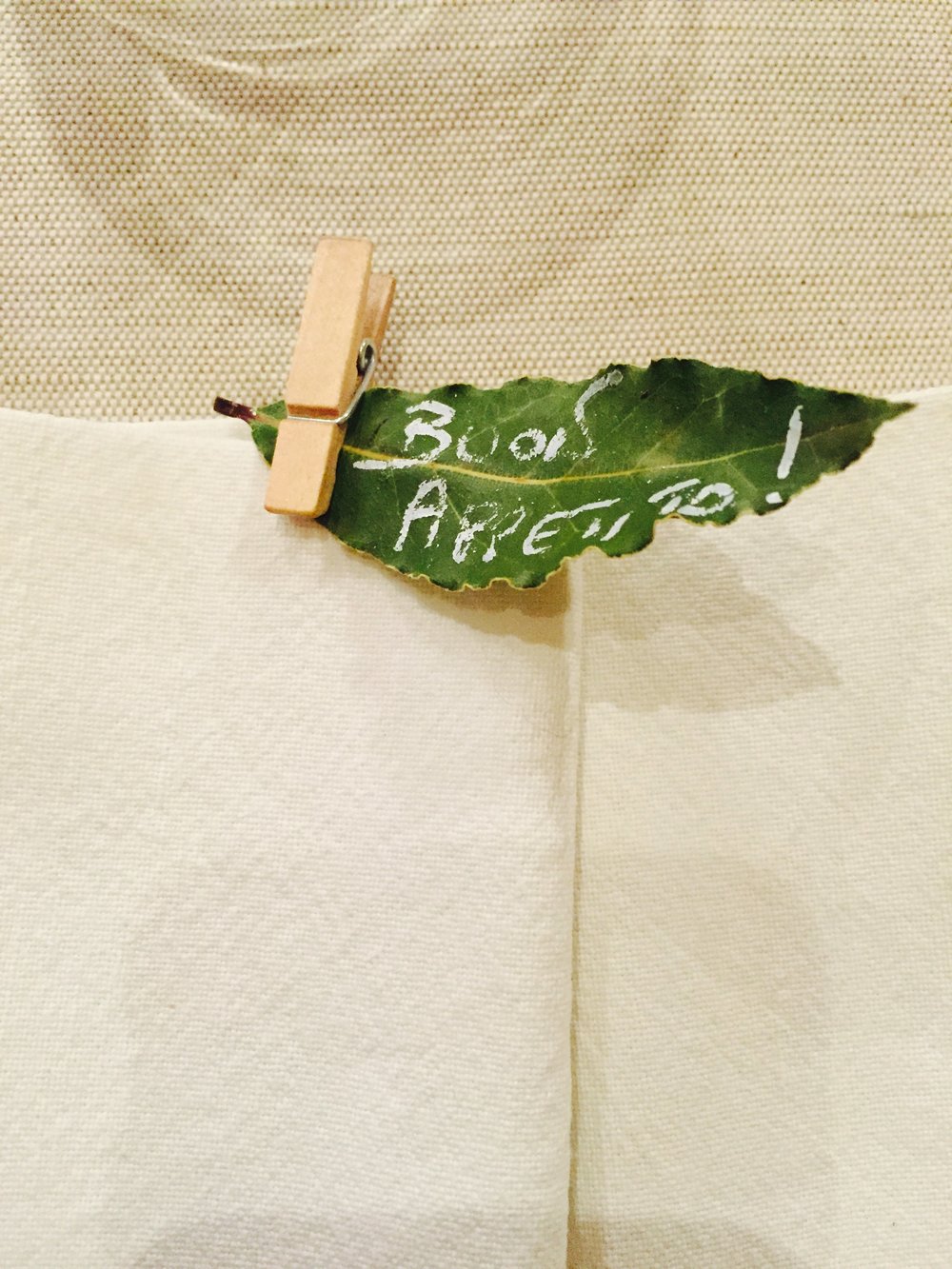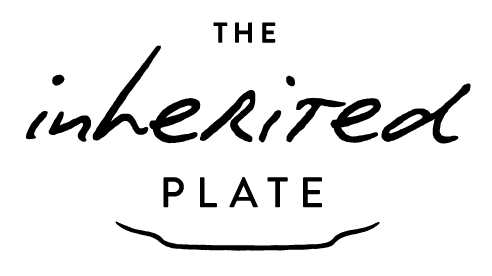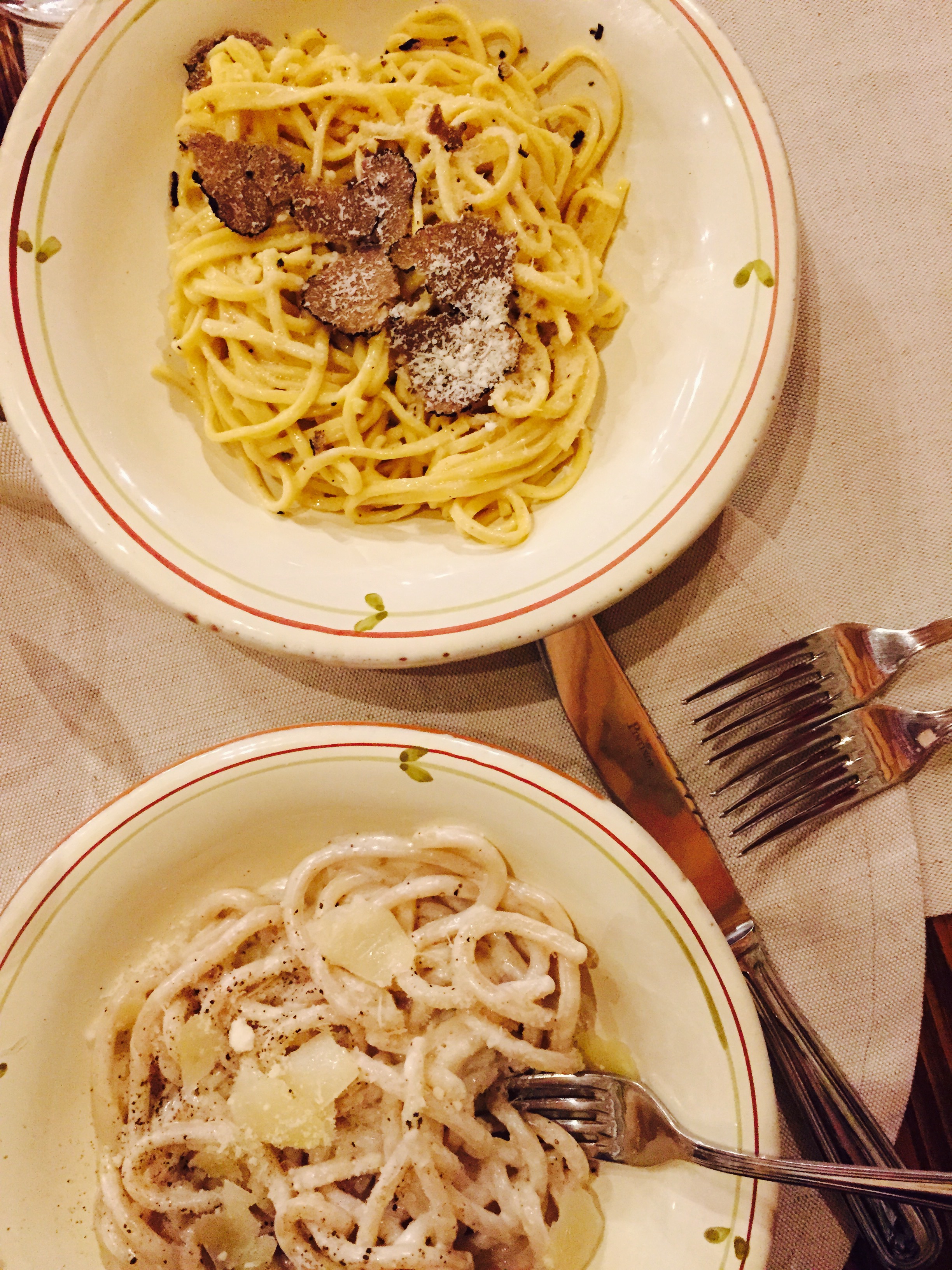What is Italian Food Anyway? My Little Musings on Italy and All Things Italian

When I was 15, my parents decided to take us on a Perillo tour. For all you 30 something New Yorkers, you'll probably remember the members of the Perillo family promising you and unforgettable experience in their native Italy on their evening commercials.
I can't quite remember all the details but I can tell you this: on the second day, we drove to a castle somewhere in Lombardia between Como and Milan and sat down to have lunch on the terrazzo of this palazzo. And there, a few servers formally dressed in suits brought out plates of Prosciutto and Melon.
Prosciutto and Melon Photo: Leo Cestari
The same way I was curious about the combination of salty and sweet as I watched people eat watermelon and bulgarian cheese for dessert in Israel, I was now stumped by this pairing of fruit and ham. For an appetizer.
Tasting it was understanding the simplicity of much Italian cooking. A few ingredients mingle together and you can distinctly taste each of them.
This was such a departure from every so called Italian dish I'd tried back in NY, where of course we were eating Italian American foods such NY style pizza, spaghetti and meatballs and pasta al vongole. Probably the most exotic thing I could recall seeing on Arthur Ave was Scungilli.
Sicilians, Calabrians, Campanians and Italians from other Southern regions made up most of the immigrant population coming to the US during our waves of immigration at and before the turn of the 20th century.
Ischia, Italy Photo: Danielle Rehfeld
The foods of those Italian immigrants underwent an evolution here, what many Americans now think of as Italian food are dishes like Eggplant Rollatini, Baked Ziti, Veal Parmigiano, Penne al a vodka, and Chicken Piccata. Of course, Giada Di Laurentiis' food and mass market appeal have altered what people think of as Italian food.
Don't get me wrong. I love Italian American Food. I grew up in the Bronx and some of my fondest memories are of walking down Arthur Ave before Christmas to eat at Dominick's. Ann Volkwein wrote a great book about the foods and culture of of Italian American business owners and this community called The Arthur Avenue Cookbook.
These are indeed freaking delicious and part of the Italian tradition as a whole, however they are a far cry from what any American would experience if they got dropped in a small town in Liguria, Piedemonte or even Rome for that matter. Yes there would be Pasta. Yes there would be Pizza or risotto. But not the same.
I once asked an Italian if she put chicken in her pasta and she responded, "I wouldn't feed that to my dog."
Indeed. Well maybe spot would really enjoy that. I know my dog would. But the point is if you visit Italy from town to town, with local people, you will see they all eat different kinds of tomatoes, different sorts of olives, and they eat seasonally without calling it eating in season. That's just how they eat.
On a short tip to Maremma, Tuscany to the small town of Montemerano, I spent the two days after Easter at Da Caino.
I read about Chef Valeria Piccini in the epic book Heat by Bill Buford and wanted to see her kitchen for myself. Located in the heart of Tuscany, this relais and chateaux property was a 30 seater and the chefs all worked around a common table in the middle, where the dishes were finished by Valeria and her son Chef Andrea Menichetti.
After the lunch service, the kitchen was closed and staff went on break. When we came into the kitchen, at around 3:30/4 PM, Valeria entered with basket of sheep's milk ricotta and just- picked baby artichokes. My Italian was lousy and her English not so great, so she beckoned me over to demonstrate how to eat the artichoke.
And there for family meal, Valeria, her cooks and I ate, fresh bread, creamy ricotta cheese still speckled from its draining basket and these tender spring artichokes. This was again another revelatory moment where I encountered the simplicity of Italian food.
Ricotta, Honey, Fig Preserves and Marmellata in Ischia, Italy, Photo: Danielle Rehfeld
So what are the commonalities? Well for sure the starches like risotto, pasta and pizza. You'll find those staples throughout the country. Likewise salumi and cured meats can be found in most of the regions. And of course of bread and Olive Oil. Having said that, the variations are so vastly different even with those categories.
Tagliolini with black truffles and Cacio Pepe at La Vin'Osteria in Radda in Chianti, Tuscany Photo: Danielle Rehfeld
Pizza in rome, vs. pizza in tuscany, rome or naples is totally different. I encourage Americans as much as possible to really get out of their comfort zones when traveling to Italy and avoid those tourist traps. Do some research and find some hole in the walls or experiences that are truly going to give you an exciting vacation from your everyday palate here.
Margarita Pizza with Mozzarella di Bufala at Pizzeria I Decumani in Naples, Italy Photo: Danielle Rehfeld
Some of the dishes up on the The Inherited Plate are classics submitted by contributors such as Tutti a Tavola's Tiramisu and others are recipes I've developed myself over the years such as Bruschetta(check back for these soon!). These will give you an example of the simple kinds of Italian food I have come to love.
Katie Parla's blog is an excellent resource for people traveling to the region as she is an expert in the area of Italian food as is Jaclyn DeGiorgio's blog A Signorina in Milan.
Other resources such as Marcella Hazan's tome The Essentials of Italian Cooking are an entry point to those who have a love affair with all things Italian.
If you're visiting New York City, visit Eataly, the Italian supermarket is an excellent resource for tasting a host of quality italian products. This month at Italy is Tuscan Month so they are highlighting the olive oils and foods of that region. Italy is a great place to explore the differences for example in the flavors of olive oil from Umbria to Tuscan or Sicily. They differ in fruitiness, smoothness and some are surprisingly very spicy. They offer a variety of classes to learn more about Italian cookery and cuisine.
Since Italy is my favorite country to visit, I'll be continuing to post about my travels and great food suggestions and destinations so I hope you'll keep in touch!
If you are traveling to Italy and want to eat well, Slow Food International is a wonderful organization and like Michelin has a system of assessing the level of quality at restaurants. Italian restaurants with the slow food snail of approval (slow food logo is a snail) have been acknowledged for their commitment to quality, sustainability and essentially being anti fast food, preparing food with tradition and integrity.
Not sure if I answered the question, what is Italian food. To define it would be to limit how expansive it is.
Baci!
Danielle
An Archway in the Heart of Rome Photo: Danielle Rehfeld






